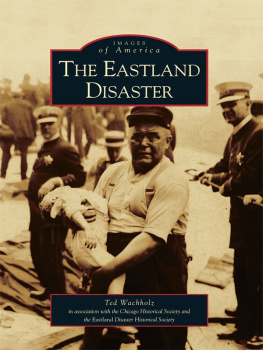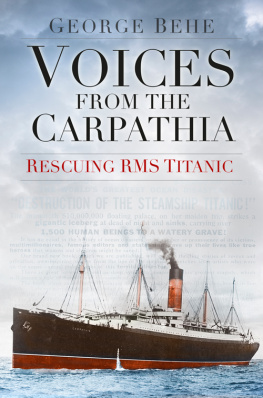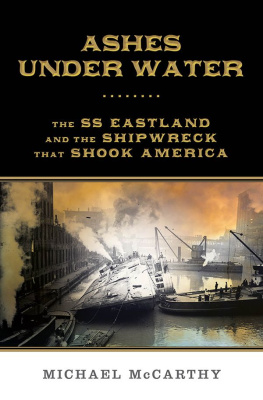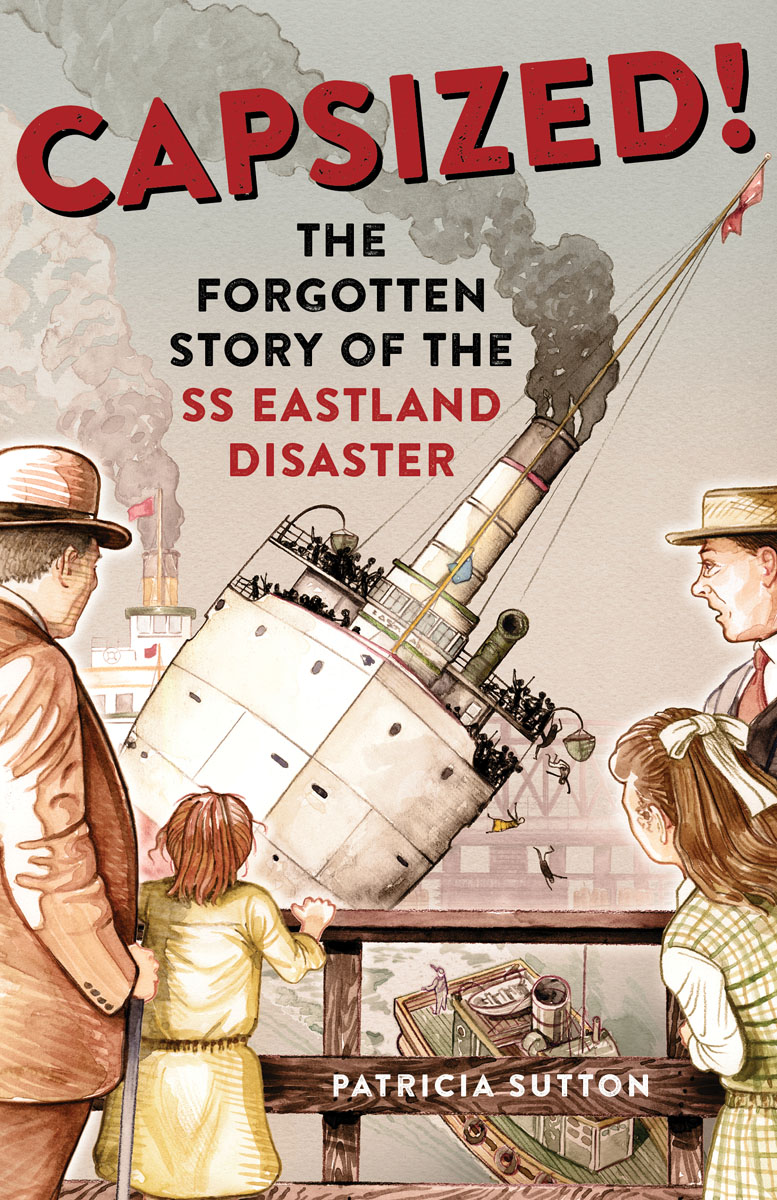
O N JULY 24, 1915, the SS Eastland, filled to capacity with 2,500 passengers and crew, capsized in the Chicago River while still moored to the pier. Happy picnic-goers headed for an employee outing across Lake Michigan suddenly found themselves in a struggle for their lives. Trapped belowdecks, crushed by the crowds attempting to escape the rising waters, or hurled into the river from the upper deck of the ship, roughly one-third of the passengers, mostly women and children, perished that day.
The Eastland disaster took more passenger lives than the Titanic and stands today as the greatest loss of life on the Great Lakes. Capsized! details the events leading up to the fateful day and provides a nail-biting, minute-by-minute account of the ships capsizing. From the courage of the survivors to the despair of families who lost loved ones, author Patricia Sutton brings to light the stories of ordinary working people enduring the unthinkable.
Capsized! also raises critical-thinking questions for young readers: Why do we know so much about Titanics sinking yet so little about the Eastland disaster? What causes a tragedy to be forgotten and left out of societys collective memory? And what lessons from this disaster might we be able to apply today?

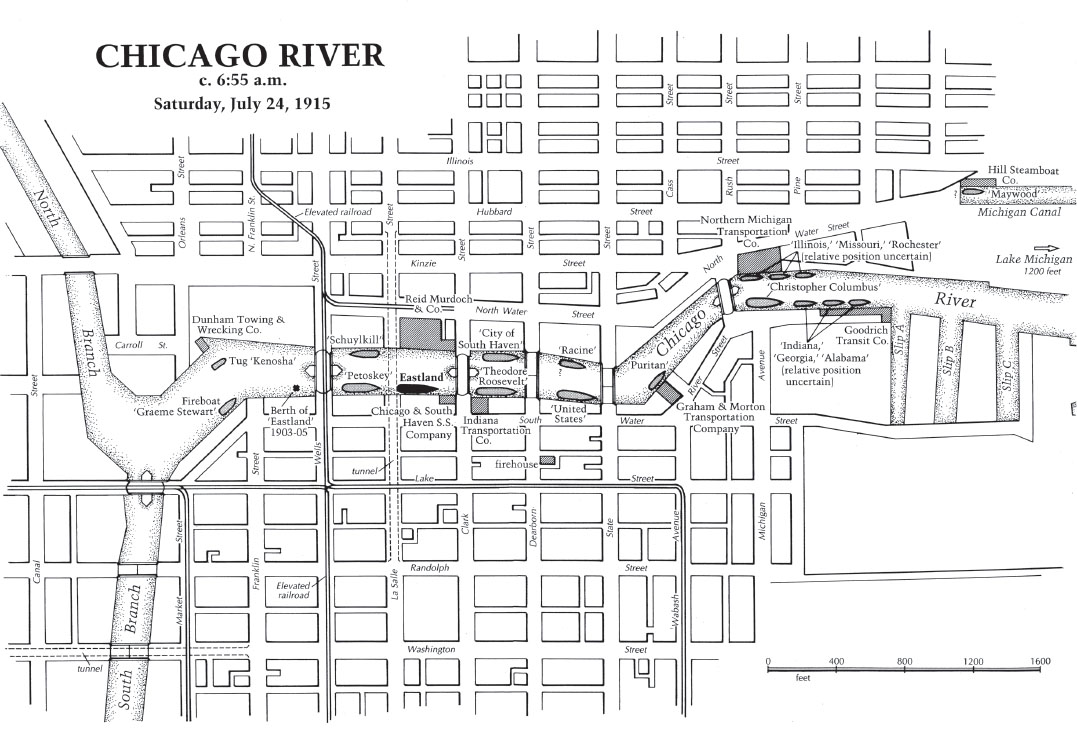
Copyright 2018 by Patricia Sutton
All rights reserved
Published by Chicago Review Press Incorporated
814 North Franklin Street
Chicago, Illinois 60610
ISBN 978-1-61373-943-3
Library of Congress Cataloging-in-Publication Data
Names: Sutton, Patricia, author.
Title: Capsized! : the forgotten story of the SS Eastland disaster / Patricia Sutton.
Description: Chicago, Illinois : Chicago Review Press, 2018. | Includes bibliographical references and index. | Audience: Age 10+ | Audience: Grade 4 to 6. |
Identifiers: LCCN 2017051163 (print) | LCCN 2018007087 (ebook) | ISBN 9781613739440 (adobe pdf ) | ISBN 9781613739457 (kindle) | ISBN 9781613739464 ( epub) | ISBN 9781613739433 (hardback)
Subjects: LCSH: Eastland (Ship)Juvenile literature. | ShipwrecksIllinoisChicago RiverJuvenile literature. | BISAC: JUVENILE NONFICTION / History / United States /20th Century. | JUVENILE NONFICTION / History / United States / State & Local.
Classification: LCC G530.E18 (ebook) | LCC G530.E18 S87 2018 (print) | DDC
917.73/110441dc23
LC record available at https://lccn.loc.gov/2017051163
Interior design: Sarah Olson
Printed in the United States of America
5 4 3 2 1

Dedicated to the memory of the 844

CONTENTS

MAIN CHARACTERS

PASSENGERS
Borghild Bobbie AanstadA 13-year-old girl headed to the Western Electric employee picnic, along with her sister Solveig, mother Marianne, and uncle Olaf Ness
Kelly familyNew arrivals to Western Electric in Chicago: Charles Kelly, wife Mamie, nine-year-old Jenny, and five-year-old Charlie
Thyer familyNeighbors of the Kellys: Western Electric employee Henry Thyer, wife Helen, nine-year-old Helen, and seven-year-old Harry
Goyette familyGeorge, foreman of the Woodworking Department at Western Electric, and three of his sonsLyle, Frank, and Charlie
Working girlsThe Polivka and Zastera sisters, Helen Greszowiak, and Emma Grossmana few of the hundreds of single female employees scheduled to march in the picnics beauty parade
Number 396An eight-year-old boy with brown hair, a full face, and a broad nose
CREW
Captain Harry PedersenVeteran captain serving aboard the SS Eastland
Chief Engineer Joseph EricksonNewly hired officer aboard the Eastland
RESPONDERS
Helen RepaWestern Electric nurse assigned to staff the hospital tent for the picnic
PROLOGUE

Promising to be the fastest steamship to sail the Great Lakes, the SS Eastland drew the families of Port Huron, Michigan, to the banks of the Black River on May 6, 1903. On a Tuesday afternoon, shops and offices around town closed, and a school holiday sent children streaming into the streets at noon. Buildings were draped in red, white, and blue bunting, a brass band played Sousa marches, and curious onlookers climbed trees or sat on the roofs of nearby buildings for a better look. More than 6,000 citizens turned out to witness the launch of the first passenger ship built by the Jenks Shipbuilding Company. After watching eight months of progress on the towns newest vessel, they came to celebrate the send-off.
At precisely 2:15 PM , two sharp blasts sounded from the ship and the Eastland began to awaken, moving just a bit, shifting and stirring from a still position. Factory whistles shrieked, tugboat horns blared, and church bells rang out to herald the moment. The captains wife, Mrs. Frances Pereue, stepped forward and struck a beribboned bottle of champagne against her steel bow.
As the crowd clapped and cheered, the Eastland slid sideways down the rails into the river, sending a cascade of water splashing to the shore. The ship rolled to a 45-degree angle and stopped, holding a precarious lean. People gasped, watching and waiting to see what would happen next.
Then the Eastland righted itself to the roar of the excited spectators.
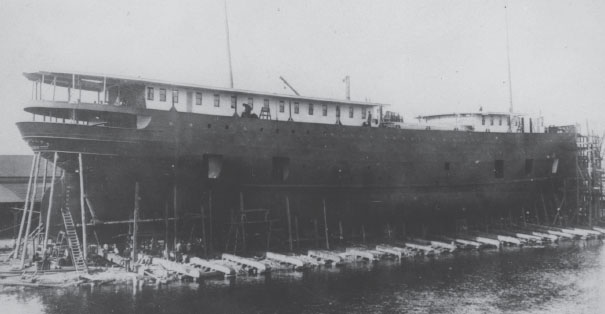
The Eastland at the Jenks shipyard.
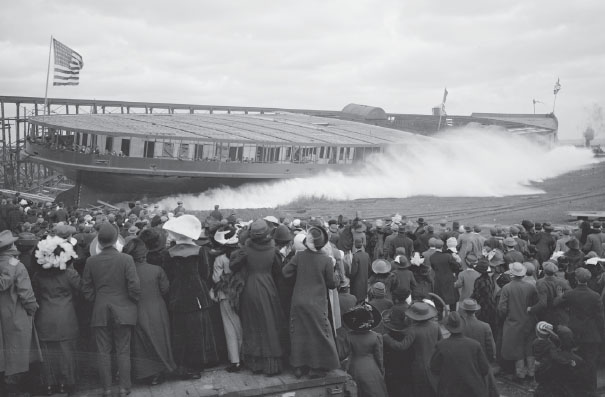
Launch of a Great Lakes steamship.
She came right back up, just as nice and steady as a church, remarked shipbuilder Sidney Jenks. Steady as a church.

A year later, on a sweltering summer evening, the Eastland transported its cargo of tired picnickers home to Chicago, from the beaches of South Haven, Michigan. July 14, 1904, was the hottest day on record, and nearly half of the 2,300 passengers packed the upper hurricane deck, hoping for a cool lake breeze.
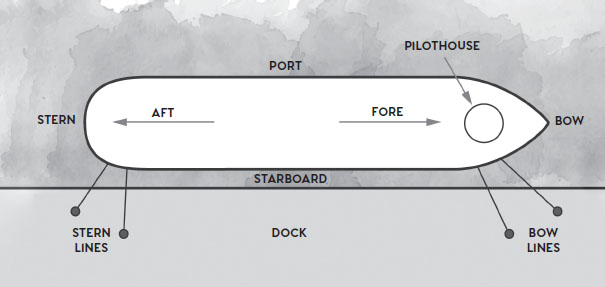
Nautical terms and diagram of the Eastland at the pier.
Captain Frank Dority headed full speed toward Chicago, but only a mile and half from the Michigan shore the
Next page








